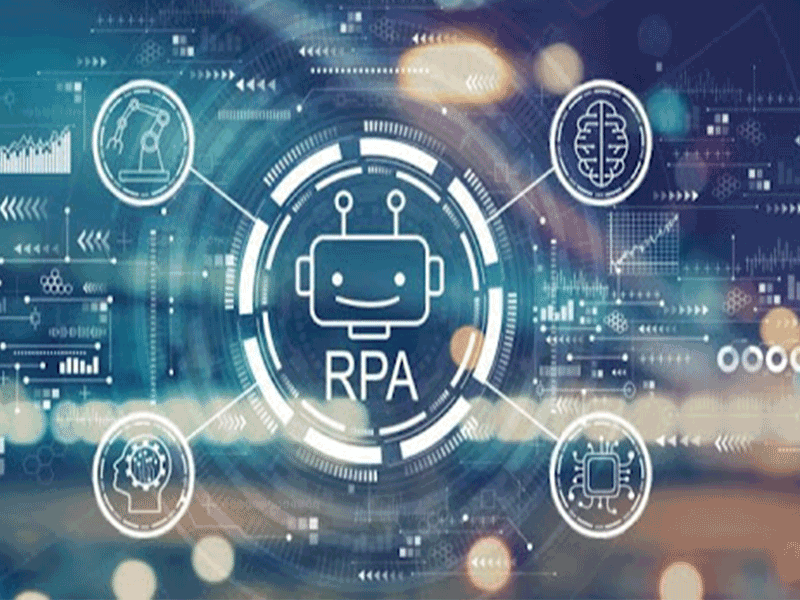Robotic Process Automation
What is Robotic process automation (RPA)??
RPA is the use of software with artificial intelligence and machine learning capabilities to handle high-volume, repeatable tasks that previously required humans to perform. These tasks can include queries, calculation and maintenance of records and transactions.
Because RPA doesn’t replace employees, it can be attractive to many types of organizations. For example, because RPA typically doesn’t require changes to legacy systems or applications, the changeover from traditional processing processes is much easier than with other automation solutions. RPA is also a great option for industries that need human interaction and are highly regulated
RPA technology consists of software robots(bots) that can mimic a human worker. RPA bots can log into apps, enter data, calculate, and complete tasks and then log out. Currently practitioners divide RPA into two camps—screen scraping and object recognition. Screen scraping is the most common type of RPA used today. It involves the bots mimicking a human’s mouse movements to capture data, which is then fed into an application or back-end system. Object recognition uses live video, or a static image to train a bot to recognize individual objects and their features. It is the most complex of RPA technologies currently available, but it has the highest level of accuracy. Some example tasks include AI-based robotic process automation technology can be used for data entry, managing documents, writing emails.
RPA technology into three broad categories: probots, knowbots and chatbots.
1-Probots are bots that follow simple, repeatable rules to process data.
2-Knowbots are bots that search the internet to gather and store user-specified information.
3-Chatbots are virtual agents who can respond to customer queries in real time.
Robotic process automation streamlines workflows, which makes organizations more profitable, flexible, and responsive. It also increases employee satisfaction, engagement, and productivity by removing mundane tasks from their workdays.
The typical benefits of robotic automation include reduced cost; increased speed, accuracy, and consistency; improved quality and scalability of production. Automation can also provide extra security, especially for sensitive data and financial services.
Robotic automation is a best-fit solution for organizations that have become highly dependent on manual processes. It can also increase the redeployment of human resources and reduce the risk of fraud, waste, or error.
**According to research from Gartner, RPA in healthcare improves efficiency by automating data collection and records retrieval
The hosting of RPA services also aligns with the metaphor of a software robot, with each robotic instance having its own virtual workstation, much like a human worker. The robot uses keyboard and mouse controls to take actions and execute automations. Normally all these actions take place in a virtual environment and not on screen; the robot does not need Process automation is the process of using software to control computers without the need for human interaction. This method can be scaled thanks to virtualization technology that enables a company with limited physical hardware capacity and heavy costs. RPA implementations in corporations have shown dramatic cost savings when compared to non-RPA approaches.
There are however several risks with RPA. Criticism includes risks of stifling innovation and creating a more complex maintenance environment of existing software that now needs to consider the use of graphical user interfaces in a way they weren’t intended to be used. RPA also carries the risk of moving all PC functions into the cloud, which has been damaging to many, these risks are important considerations for businesses looking to implement RPA.
There will be a net benefit from the trend of robotic process automation in developed countries with skills and technological infrastructure to develop and support this technology.
RPA actual use:
. Banking and Finance Process Automation
. Mortgage and Lending Process
. Customer Care Automation
. E-Commerce Merchandising Operation
. OCR Application
. Data Extraction Process
. Fixed automation process
**Meanwhile, Professor Willcocks of the London School of Economics and Political Science speaks of increased job satisfaction and intellectual stimulation, characterizing the technology as having “the ability to take [humans] out of the robot”.
**An article in Computer Weekly suggests that, while projects implemented with traditional process automation tools have helped speed up business processes.










A WordPress Commenter
September 6, 2021Hi, this is a comment.
To get started with moderating, editing, and deleting comments, please visit the Comments screen in the dashboard.
Commenter avatars come from Gravatar.